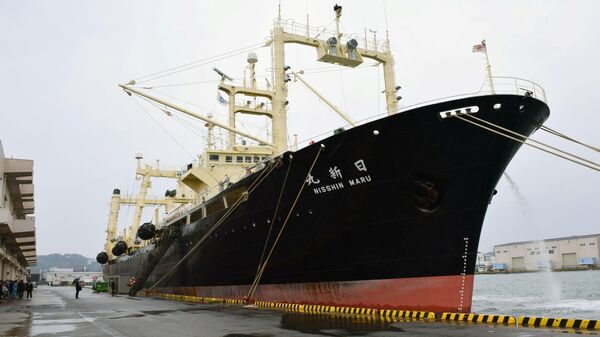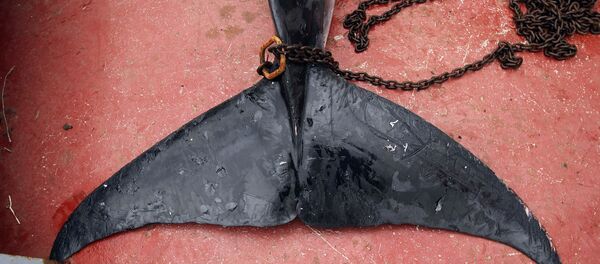MOSCOW (Sputnik) — Japan kicked off its controversial whaling season for fiscal year 2017 on Wednesday, under the name of scientific research, aiming to capture 43 minke whales and 134 sei whales, local media reported, citing Japan’s Fisheries Agency.
Japan’s whaling fleet is expected to collect data on stomach contents and skin samples among other things in the northwestern Pacific, Kyodo News reported, citing the statement from the Fisheries Agency.
The Japanese agency has submitted to the International Whaling Commission (IWC) a plan to catch a total of 304 whales per year from fiscal year 2017 to 2028, but the proposal has not been approved by the IWC, due to objections from an anti-whaling group of IWC members.
Japan’s previous whaling operations ended with its whaling fleet returning with the carcasses of 333 minke whales on board in March.
In March 2014, the International Court of Justice ordered Japan to suspend its research whaling in the Antarctic Ocean, saying it violated the International Convention for the Regulation of Whaling.
Despite Japanese authorities’ claims that whaling has been a cultural tradition in Japan, modern commercial whaling in the country only started in the late 19th century. Commercial whaling received a huge boost after World War II, when US General Douglas MacArthur, who effectively ruled Japan during the post-war Allied occupation, encouraged commercial whaling as a way to secure protein for the Japanese people, in order to cut down costs of transporting food from the US to post war Japan.
Whale meat consumption dropped significantly in Japan in recent decades. Official figures showed Japan’s annual consumption of whale meat stayed at around 4,000-5,000 tonnes, a sharp drop from its peak of more than 200,000 tonnes in the 1960s.



